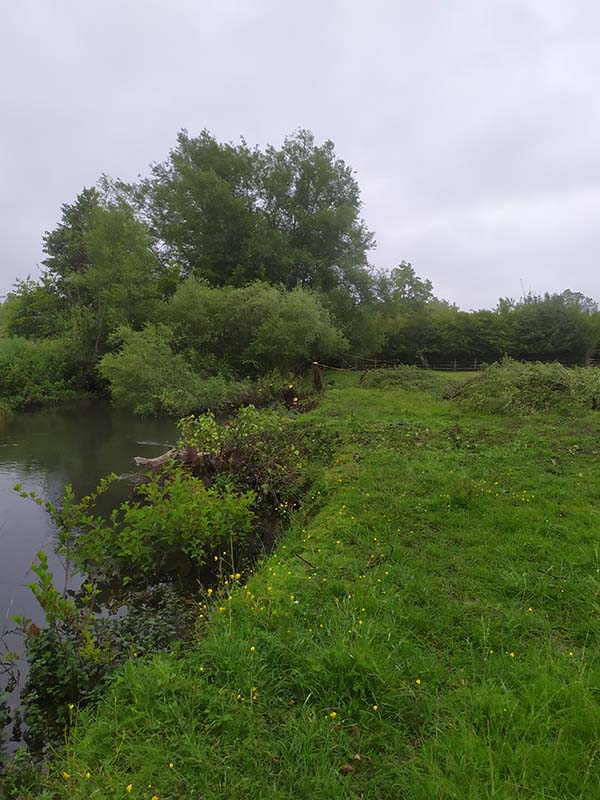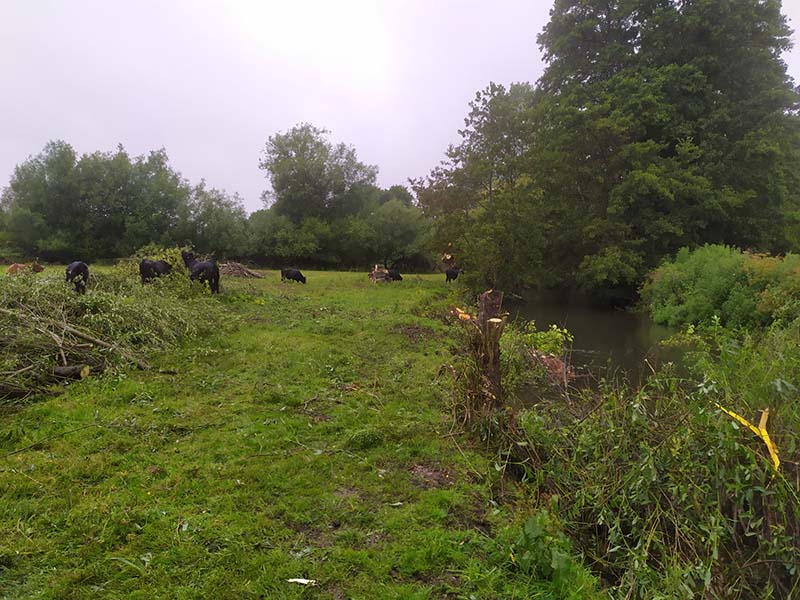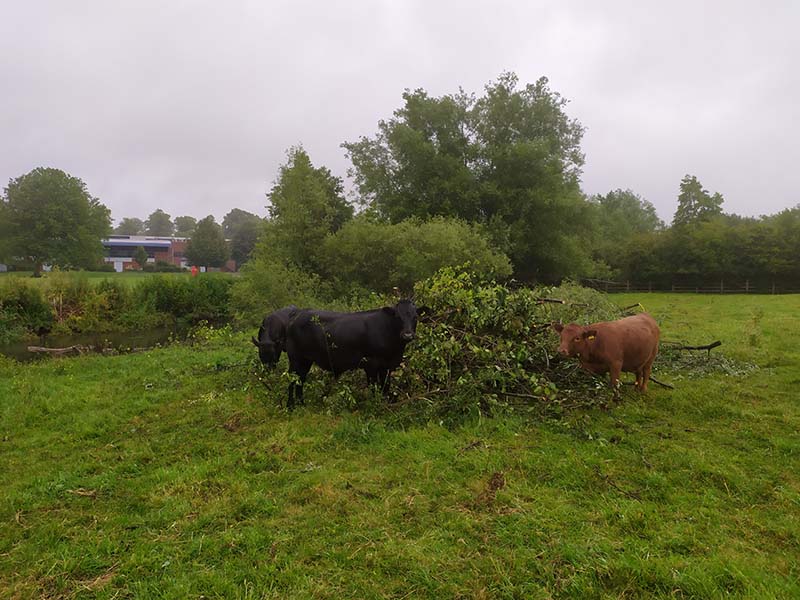This isn’t the ideal time of year to be doing treework, ideally I would do this in winter as there is less vegetation so less effort clearing your working space, the trees have less sap which is stored in their roots over winter and no leaves so are lighter, thus less dangerous and easier to work with; plus there are more other things to do in the summer, like mowing. But the land was too flooded in the winter. Luckily the cows have kept the meadow clear and we aren’t working on anything to large, so decided to crack on now as we need to get the trees clear in order to start planting river and riparian plants which need the light that the trees are blocking.
We borrowed a long arm chain saw which is a great tool for dealing with the out of reach small willow we needed to clear at a nice safe distance form falling branches. It even had a new chain so made very light work of the willow in no time at all.

Clearing up always takes longer and this is ideally where volunteer working parties will come in, but unfortunately not practical during the pandemic. We haven’t progressed with setting this up yet. If you would like to help, please still let us know and we will be in touch when the parties do start.
So only two of us doing the tidy up. As the willow was heavy and green, literally wet to to the touch with sap, we have left it in a pile in the meadow for now. This works to our favour as firstly the cows will munch on it and break it all down into smaller pieces, it will dry out in the sun and become lighter and easier to move; then when we do move it, there will be a patch of soil that could allow wildflower seeds to get established.
You might ask, why we need to move it at all? If we leave it in the meadow willow will take root and grow into new trees. Willow is almost indestructible in natural conditions, a small bit in contact with soil will take root and shoot, it then grows big and falls over, with fallen branches taking root and spreading further until you eventually have no meadow or river just a dark mass of willow. This is why we have top manage the willow in the first place, so leaving it in the field isn’t an option.
What will we do with it? Many people doing this sort of work would simply burn it, it is a very simple solution to not having to tidy up and who doesn’t like a bonfire. But ultimately I would rather the carbon rots into the ground than get burnt into the air. The vast majority will be stacked in shady areas of dense willow such as the ditch running between the two meadows. As it dries and breaks down it forms a dense pile of rotting wood that is a great habitat for all manner of species, literally bacteria, fungi, invertebrates, insects, reptiles, birds and small mammals up to the size of an otter. Many of those being food for the others!
Willow that has dried and is in no chance of coming back to life can be used to create faggots to protect the riverbank and establish riparian plants. A small amount will be used to cook pizza in the clay oven for our volunteers when we do eventually have working parties. Willow makes quite good kindling when dry, but it is a poor firewood for heating a home so of no commercial value. However the bugs and beetles, birds and bats, will thrive in it for years to come.







